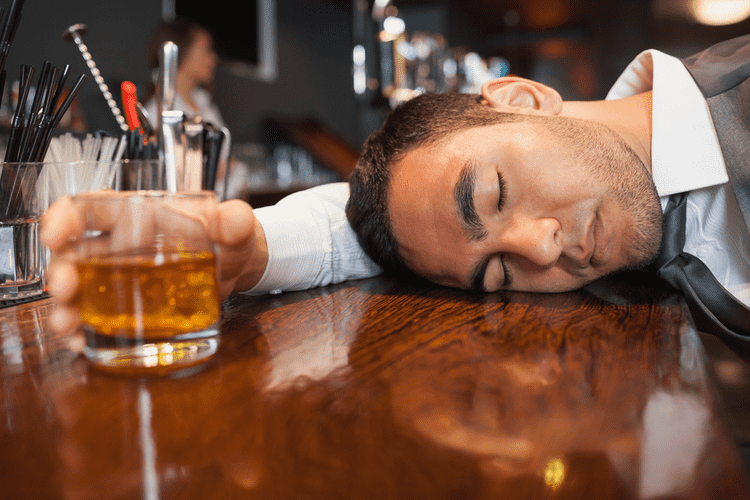Content
They saw halos and starbursts, had difficulty seeing contrast, and experienced longer recovery time after a bright light was shined in their eyes. Have you ever noticed how some people’s eyes turn red or bloodshot when they drink alcohol? That’s down to the blood vessels in the eye expanding as a reaction to the alcohol consumed. If you have ever experienced eye pain after drinking alcohol, you might already know some of the ways in which this substance can be dangerous toward your body. The combination of alcohol and eye pain is an indicator that something is not quite right. Alcohol is a known risk factor for central serous chorioretinopathy .
- Additionally, alcoholism also disrupts neurological connections to the eye and disturbs optical nerve health.
- In a study on the topic, both the retinal image quality and visual performance under low-scotopic conditions were worsened after acute alcohol consumption.
- This can cause communication failures between your eyes and brain, thus distorting your vision.
- A recent systematic review and meta-analysis revealed that heavy alcohol consumption significantly increased the risk of age-related cataract.
- According to the definitions in the United States, approximately 14 g of pure alcohol in any type of drink is considered as a standard alcoholic drink.
Here, we’ll take a look at the links between alcohol and eyesight, examining whether drinking alcohol can actually lead to long-term damage. Alcohol can have many different negative effects on your eyes. Alcohol use is connected with various vision problems, including blurry sight, dry eyes, and even blindness. These side effects can be both temporary and long term, and they range in severity. In addition, when you drink too much alcohol, your brain’s overall function is also affected.
Alcoholic Eyes: Identifying and Treating Alcoholic Vision Loss
Alcohol-related blackouts are gaps in a person’s memory for events that occurred while they were intoxicated. Generally speaking, it takes about 6 hours for the effects of being drunk to wear off. If you count the hangover/detoxification period that happens after drinking alcohol, the effects may last longer. Everyone has a different tolerance for alcohol; you may be different from someone else who drinks the same amount. It has been suggested that men drink no more than 4 units per day and women drink no more than 3 units per day. According to Medical Daily, drinking in moderation should not cause any long-term problems to eyesight. Treatments will vary greatly based on a person’s symptoms or health conditions that develop as a result of alcohol use.
What is heavy drinking?
Heavy drinking: For women, heavy drinking is 8 drinks or more per week. For men, heavy drinking is 15 drinks or more per week.
Here are some of the most common ways that alcohol can affect the eyes. There may be an association between increased alcohol consumption and geographic atrophy, a form of advanced age-related macular degeneration . However, blurry vision after drinking alcohol simply reducing alcohol intake may not be enough to prevent geographic atrophy. While double vision from drinking is a temporary effect, this is just one of the reasons that drinking and driving can be so dangerous.
What happens to your body when you drink alcohol every day?
Learning about the short- and long-term effects of alcoholic eyes—and addiction in general—can leave a lot of people feeling hopeless. But rest assured that our team is here to help you to get https://ecosoberhouse.com/ back on your feet so that you can clearly see the bright future that lies ahead. Alcohol is a depressant which means it slows down the central nervous system and makes people feel relaxed.

Damage to the eyes from drinking alcohol may be irritating, most of these conditions will clear up if alcohol consumption is stopped or reduced. On the other hand, alcoholic eye damage resulting from chronic alcohol abuse may be long-lasting or permanent. One of the main reasons for damage to the eyes from alcohol abuse is thought to be vitamin deficiency from long-term alcohol abuse. Additionally, alcoholism also disrupts neurological connections to the eye and disturbs optical nerve health. However, long-term, heavy drinking can pose some serious threats to our vision. It can increase the chances of developing age-related macular degeneration. While this usually occurs in older people, it can be spurred on by excessive smoking and alcohol consumption.
Bloodshot or Red Eyes
It can have both short- and long-term visual effects, including blurry vision, double vision and dry eye. Even the occasional drink can affect your eyes in some ways. Among them, alcohol teratogenicity and alcohol-related optic neuropathies are more definite and seem to be the most serious ocular conditions related to alcohol consumption . The most common effect is double vision, or blurry vision, brought on by heavy drinking. This occurs as a result of weakened eye muscle coordination as alcohol is a depressant, slowing your reaction times and impairing coordination. Now that you know what the effects of over-indulgence of alcohol and long-term excessive drinking, you will be aware of how it can affect the eye and eyesight.
- There is no fixed amount or threshold beyond which these symptoms will start to show.
- When intoxicated, alcohol also slows down the rate at which neurotransmitters operate in the brain.
- These are short-term effects that can begin while you are drinking, and can last for several hours afterward.
- Melanie in the optical department is a ball of fun and so trendy.
- Fortunately, AMD does not cause pain or lead to complete blindness.
- The effects may be short term, such as blurred or double vision, or they may be long term and potentially permanent.


Leave a Reply